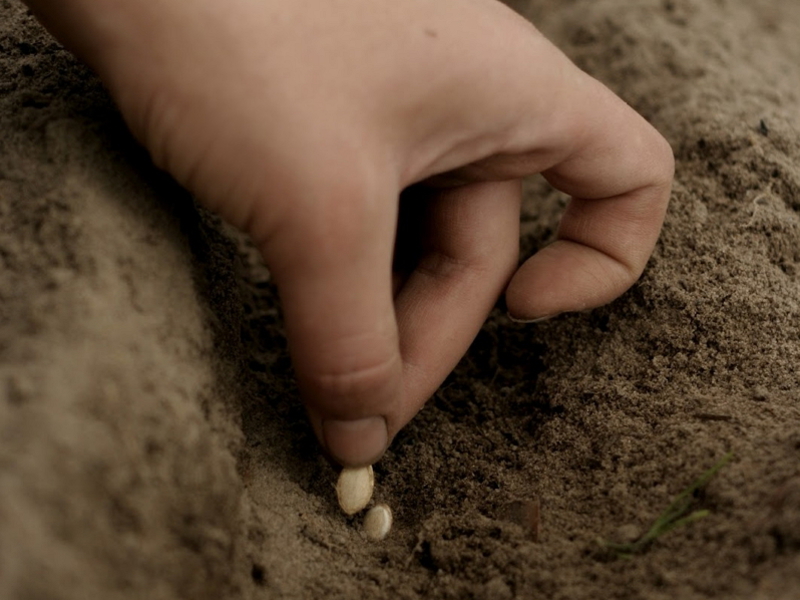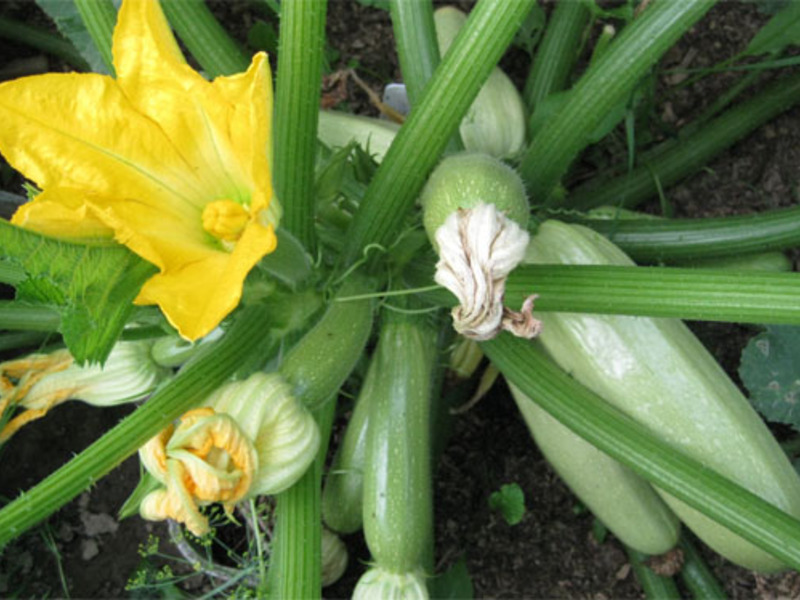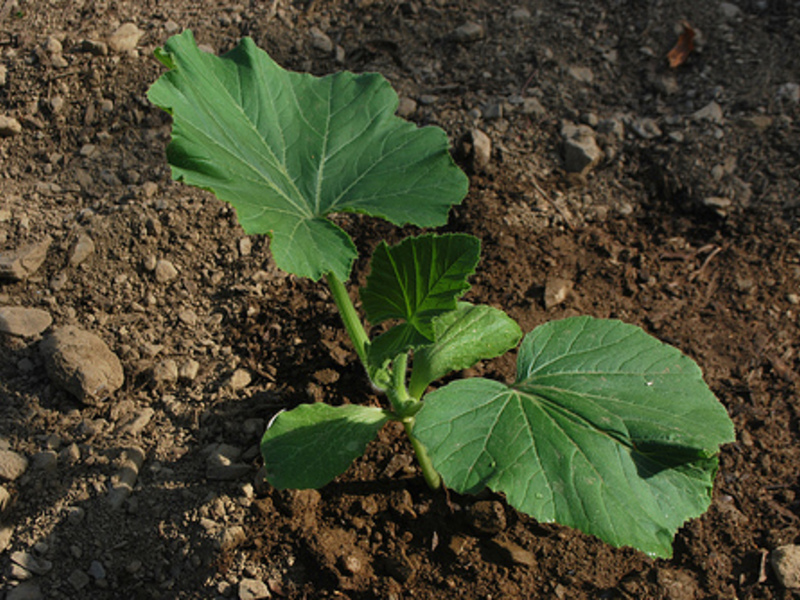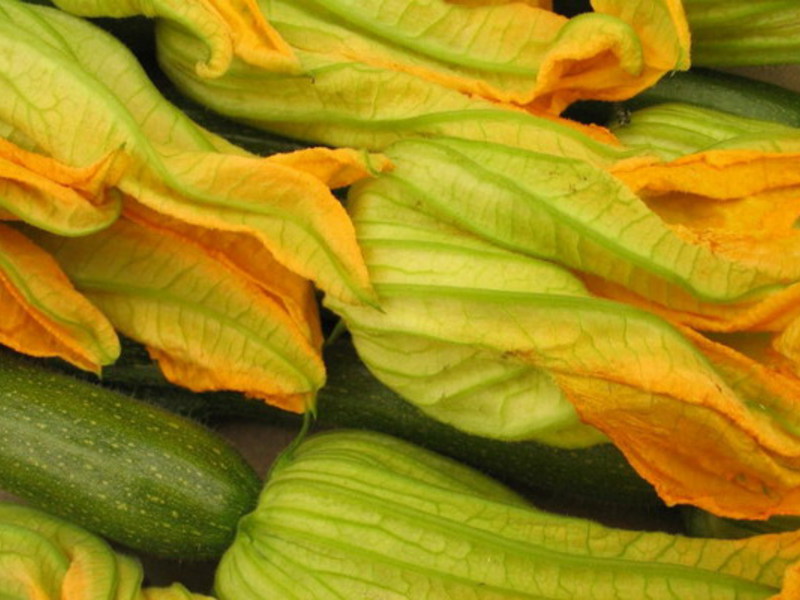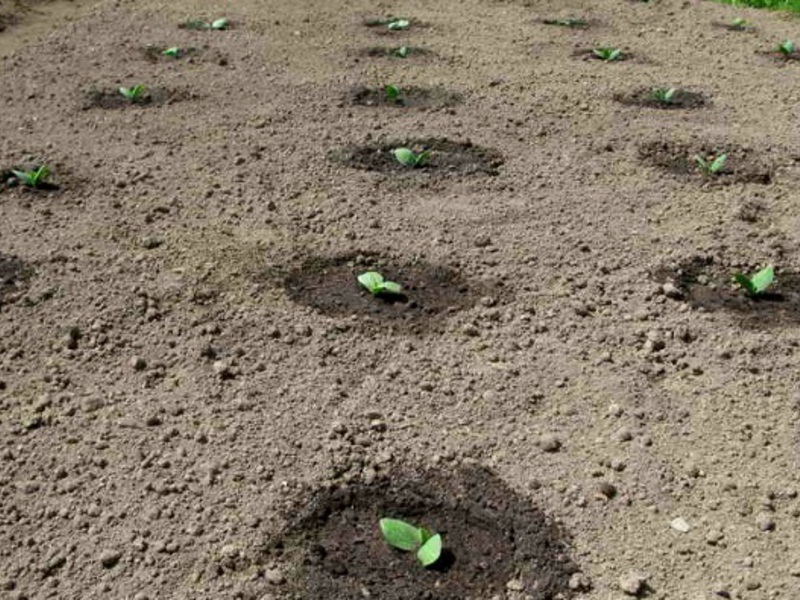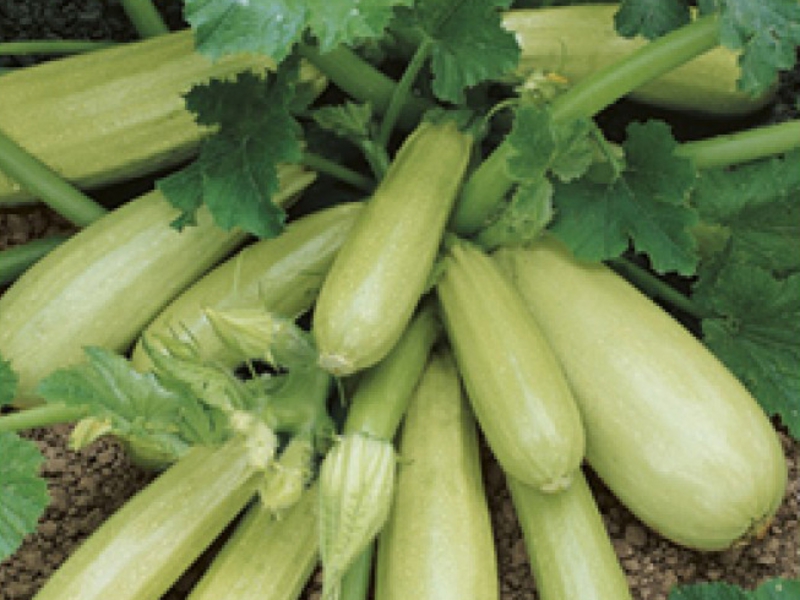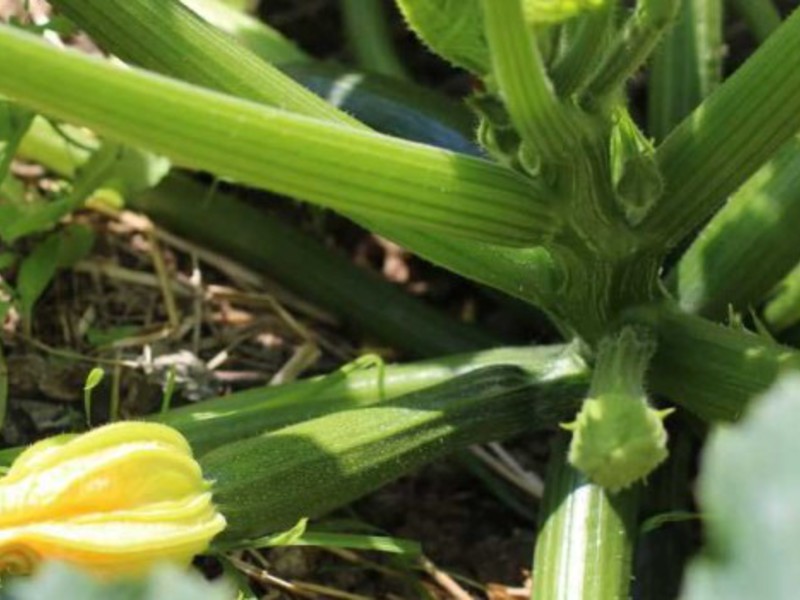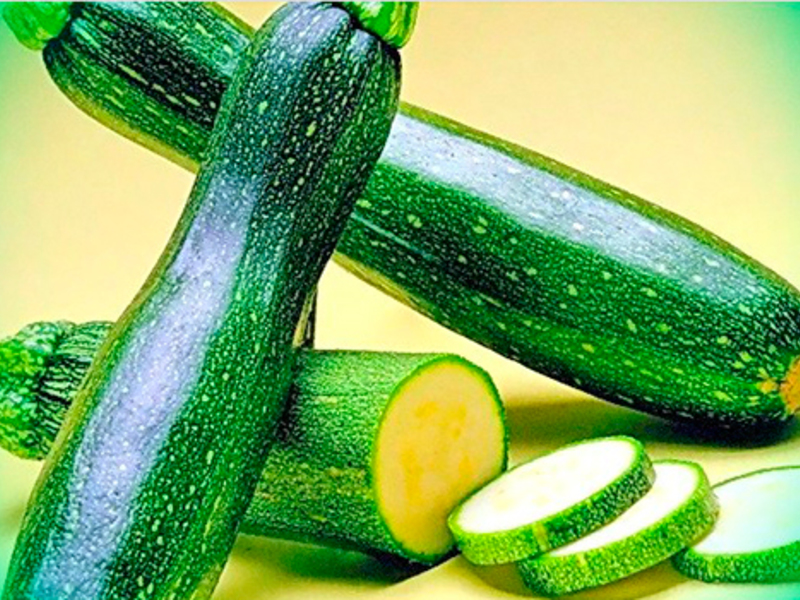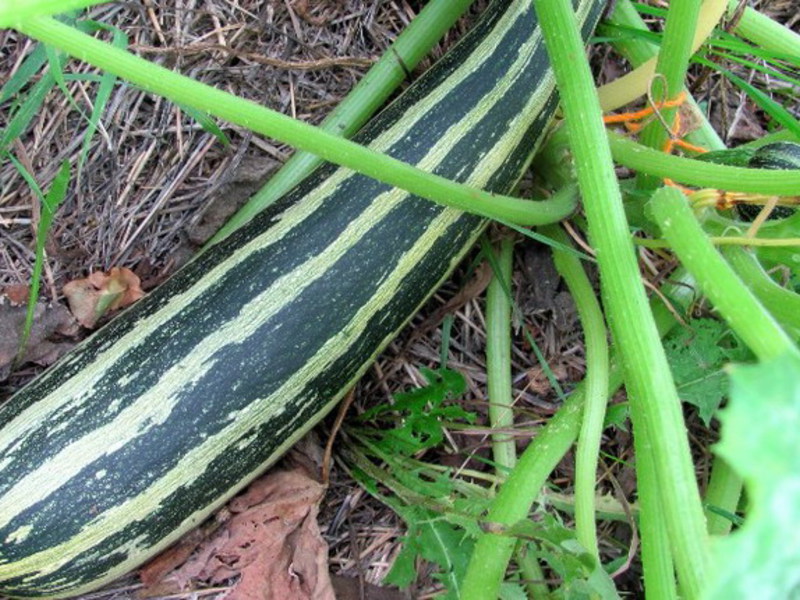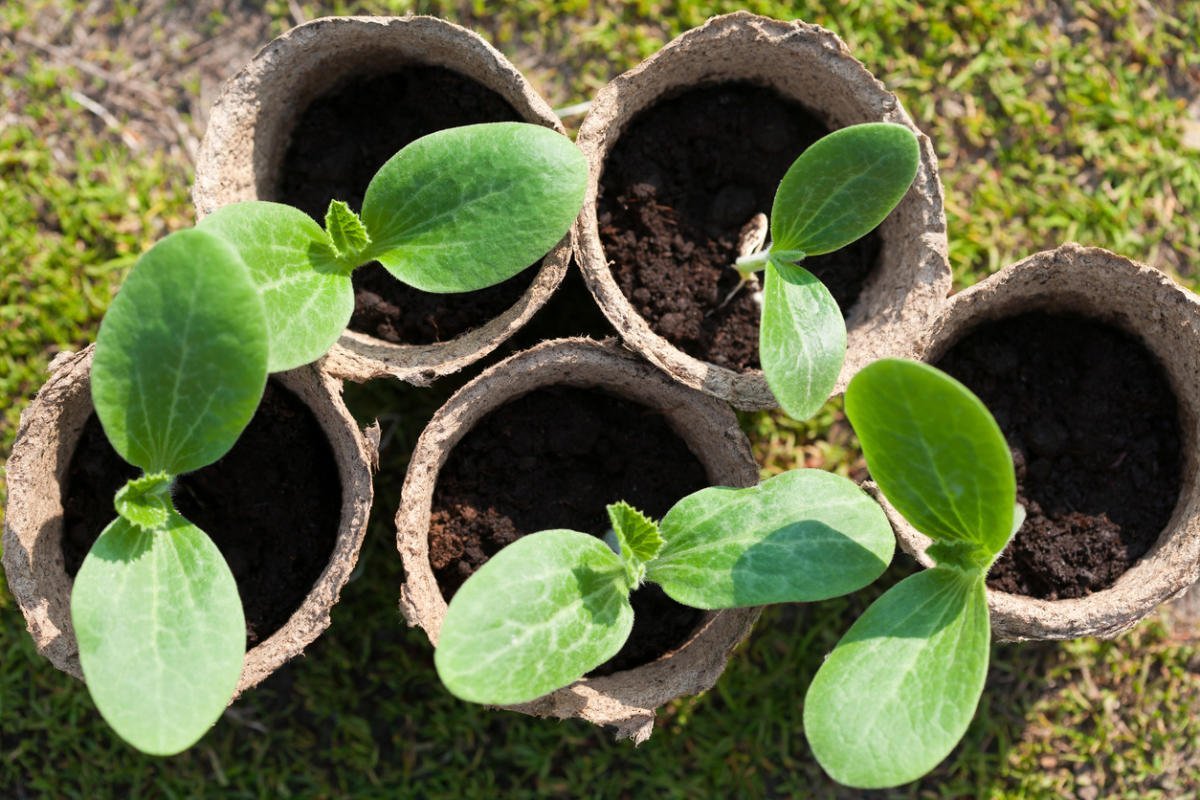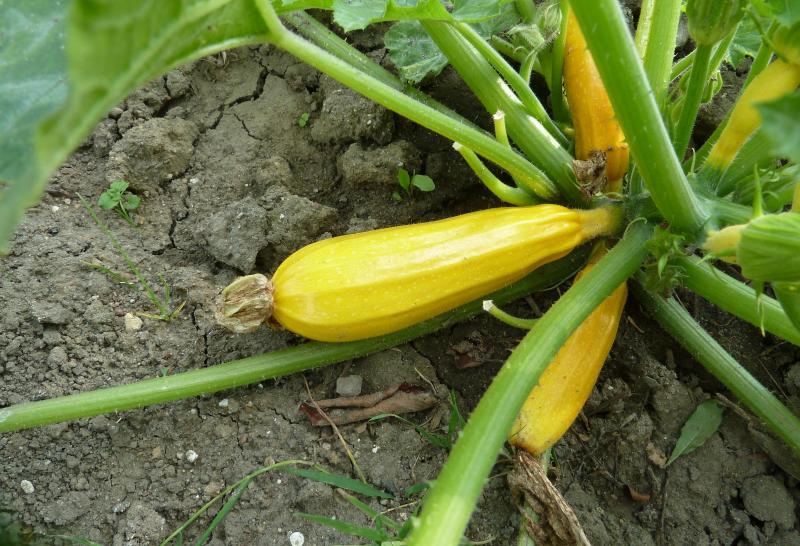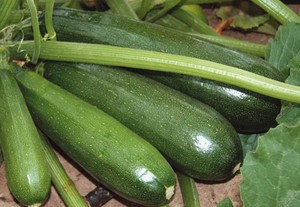 Almost every gardener tries to grow zucchini. On any site there is always a place for a couple of bushes of this plant. An unpretentious culture is characterized by the enormous benefits of the fruit, both in cooking and in various diets. The best varieties of zucchini for open ground are presented in a huge variety of shapes, differing in color, ripening time, fruit shape and taste.
Almost every gardener tries to grow zucchini. On any site there is always a place for a couple of bushes of this plant. An unpretentious culture is characterized by the enormous benefits of the fruit, both in cooking and in various diets. The best varieties of zucchini for open ground are presented in a huge variety of shapes, differing in color, ripening time, fruit shape and taste.
Content
Growing conditions
The plant requires to grow black earth, light, fertilized soil... It must be remembered that a vegetable marrow will not grow on a very swampy land with a close occurrence of groundwater.
Soil preparation for planting is carried out in the fall. It must be dug up to a depth of 30 cm, harrowed and fertilize... Organic rotted fertilizer per 1 m2 should be applied in volume - one bucket. In addition, 20 g of potassium supplements and 30 g of superphosphate are required.
In the spring, the earth should be dug up to half the depth, and then filled with ammonium nitrate. At the end, it is imperative to loosen with a rake. The width of the vegetable patch is 1.2 meters.
The best predecessors in the garden for this pumpkin crop are considered potatoes, tomatoes, cabbage... It is believed that planting this culture after cucumbers, squash and pumpkin is not recommended.
The temperature range starts from + 22C. This indicator is the most suitable for the formation of foliage, the development of lashes, rapid and abundant flowering, mass ovary and ripening.
High humidity for the culture is destructive, and therefore it is better to leave the soil dry than to fill it with water. Given this indicator, the culture is not grown under film.
Care principles
To get a good harvest of zucchini (zucchini), you should understand the basic subtleties of care. For example, seeds sown in open ground quickly sprout, which birds love to peck. That is why they will have to be protected.
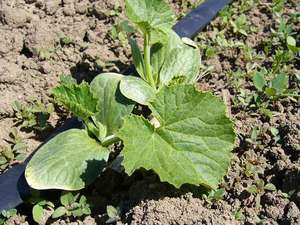 Watering - rare and abundant watering is recommended. The water should be warm. About 10 days before harvesting, watering the plant is stopped.
Watering - rare and abundant watering is recommended. The water should be warm. About 10 days before harvesting, watering the plant is stopped.- Loosening is a mandatory procedure after every rain and watering. The plant is destroyed by heavy stagnant soil. In addition, it is necessary to huddle the bush additionally in order to form a mass of adventitious roots.
- Thinning is a process required in a situation where seeds are sown outdoors. A distance of 70 cm must be maintained between the growing bushes, therefore, all seedlings are pulled out of the common hole, leaving the only strong one. A weak plant just needs to be pinched near the soil.
- Primary feeding is done after the formation of the 7th leaf. A mixture of water, ammonium nitrate, potassium component, superphosphate should be added. Secondary feeding is necessary after the beginning of the formation of the ovary with a solution of mullein 1:10 or chicken droppings 1:15.
- Pollination is a very important procedure for fruiting. The best means for pollination is considered to be spraying with a 2% solution of honey.
The collection of zucchini must be done on time, until they have lost their useful components, and the flesh with the skin is not roughened... The ideal size of the fruit for its collection is 15 cm, and the thickness is 6 cm. In general, during the growing season, you can collect up to 25 fruits from the bush.
Seed preparation for sowing
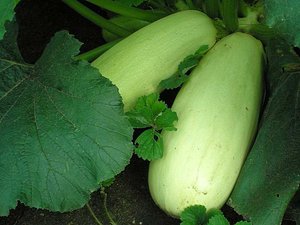 For some time before sowing, the seeds should be disinfected. The easiest way is to keep them in the sun for a couple of days. After the heating process, they are kept in a weak solution of potassium permanganate and washed with cold water.
For some time before sowing, the seeds should be disinfected. The easiest way is to keep them in the sun for a couple of days. After the heating process, they are kept in a weak solution of potassium permanganate and washed with cold water.
To get strong shoots, treatment is carried out with a solution of wood ash. A spoonful of fertilizer dissolves in a liter of water. Of course, seedlings will grow faster if they are previously germinated.
A couple of days before sowing in open ground, any kind of zucchini is soaked and folded into a cotton cloth, as shown in the photo. When landing sprouts can be easily damagedas they are very fragile. That is why the sprouts should not be stored - they are planted immediately.
Sowing rules for zucchini
If the seeds are sown for seedlings, it should be remembered that the plant reacts extremely painfully to transplants. It is better to grow seedlings in a separate peat pot so that the container is deep enough.
It is often affected by a fungal disease - black rot, and therefore the soil must be watered with a hot solution of potassium permanganate or frozen before planting. The plant is planted in a well-heated and loosened soil, and the seeds should lie at a maximum of 4 cm deep. From above, they must be moistened so that the seedlings do not weaken in the future.
Selection criteria for good varieties
In order to know what is better to plant on the site, you need to understand at least main criteria for the selection of varieties.
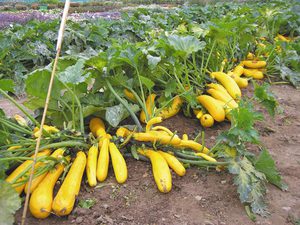 Shrub or climbing form - many varieties of zucchini are bushy, and therefore easier to grow in a large area. The fruit is cut small when the skin is thin and the flesh is tender.
Shrub or climbing form - many varieties of zucchini are bushy, and therefore easier to grow in a large area. The fruit is cut small when the skin is thin and the flesh is tender.- Varieties and hybrids - the latter give a stable harvest, but only the first generation.
- Possibility of pollination - varieties are pollinated traditionally or parthenocarpically. In the second case, the seeds are incapable of life when planted. Good self-pollinated varieties are: White Swan, Belogor, Apollo.
- Varieties - zucchini and common zucchini with white, yellow and yellow-green fruits. Zucchini are characterized by high juiciness and yield.
- Producers - a feature of imported varieties is considered to be early ripening, hybridity, beautiful appearance, but the scarcity of mineral composition. Domestic zucchini last longer and taste better. In addition, they are more resistant to frost and contain a wide range of vitamins.
Separation of varieties by ripening period
The whole variety of zucchini is conditional are divided into three categories:
- Early ripening - up to two months, and earlier ripen in almost a month. Sometimes miniature fruits can be removed in the third week. These varieties are considered a good option for the northern regions of the country. In the southern regions, such varieties are usually planted "second entry".
- The average ripening period is 50 - 60 days.
- Late ripening period - from 60 days. They are filmed in the fall.
The nicest varieties
It is difficult enough to name definitely the best varieties of zucchini because some recognize early ripening, others only mid-ripening, and someone only loves zucchini. Each gardener singles out his favorite variety, and therefore we we indicate time-tested and high-demand cultures.
- Gribovskiy 37 is a mid-season high-yielding variety with excellent taste. The first harvest can be harvested already on day 10, when the zucchini will be about 12 cm long. Technical ripeness is observed from 1.5 months. The fruits are stored for a long time.
- Belogor F1 is an early ripening variety that can be eaten 34 - 57 days after the first shoots. The fruits are light green and have a shortened central stem. Zucchini weight 0.5 - 1 kg.Produces a rich harvest and is recommended for open field cultivation.
- Zebra is a zucchini variety suitable for greenhouse and open field cultivation. The fruits are very beautiful, rounded-elongated with green stripes, as shown in the photo. The juicy pulp is delicious. This type of plant is not afraid of low temperatures.
- Zolotinka is a yellow zucchini that can weigh up to a kilogram. Small fruits, weighing up to 400 g, are distinguished by good taste characteristics. Children like sweet pulp very much. You can store the fruits for about two months.
- Pharaoh is a salad variety of zucchini that ripens well in 40 days. The weight of cylindrical fruits reaches a maximum of 1 kilogram. The yellowish pulp is sweetish and juicy. It is advised to plant it in soil, previously fed with fertilizers. The variety is not susceptible to gray rot and excellent transportability.
- Kuand is a zucchini variety, the fruits of which are harvested between 52 and 61 days. The maximum fruit length is 28 cm, and the weight is 1.5 kg. Delicious pulp is hidden behind a thin skin. Up to 20 kg of zucchini can be harvested from a square meter. Kuand is rarely affected by gray rot and powdery mildew.
Popular zucchini varieties
Today, a whole list of cultural representativesin stable demand:
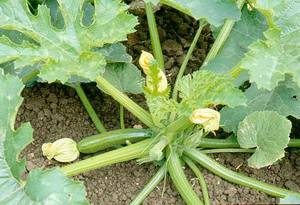 Orange is a good early ripening variety with a compact bush (the photo is on the Internet). The fruits are round in shape, the diameter of which does not exceed 15 centimeters, and are colored orange. Ripe zucchini will be 40 days after sowing. The yield is high.
Orange is a good early ripening variety with a compact bush (the photo is on the Internet). The fruits are round in shape, the diameter of which does not exceed 15 centimeters, and are colored orange. Ripe zucchini will be 40 days after sowing. The yield is high.- Astronomer is a bush marrow variety. The skin is soft and pale green and the flesh is white. By region and type of cultivation, the variety is universal. A good crop does not require pest control. After the flowers appear, and then the fruits, it is important to water the plant.
- White-fruited - a variety of zucchini, eaten on the 44th day of cultivation. The cylindrical shape of the fruit is narrowed towards the peduncle. The crust is quite thick and creamy.
- Diamond F1 is a cylindrical zucchini with a ribbed base. Its color is dark green. Under a thin peel, there is a sweetish pulp of a milky hue. For use in dishes, it is better to pluck zucchini up to 20 cm in length. This type of culture is stored for a long time.
- The hare's ear is a cylindrical zucchini with dense juicy pulp. A powerful bush begins to bear fruit 50 days after planting. In shape, the fruits resemble hare ears, and their color is unusual - light green in a dot. A rich harvest is removed from the bushes.
- Casanova F1 - early ripening good zucchini, ready for use in dishes for 45 days. The bush is drought-resistant, semi-growing, not tolerant of waterlogging. The long fruits are light green with white dots. Their weight can reach 1.5 kg.
This vegetable is very useful, and regardless of its variety. The timing of the collection is not fundamentally different, and therefore it is necessary to understand the types in order to experiment with dishes.
